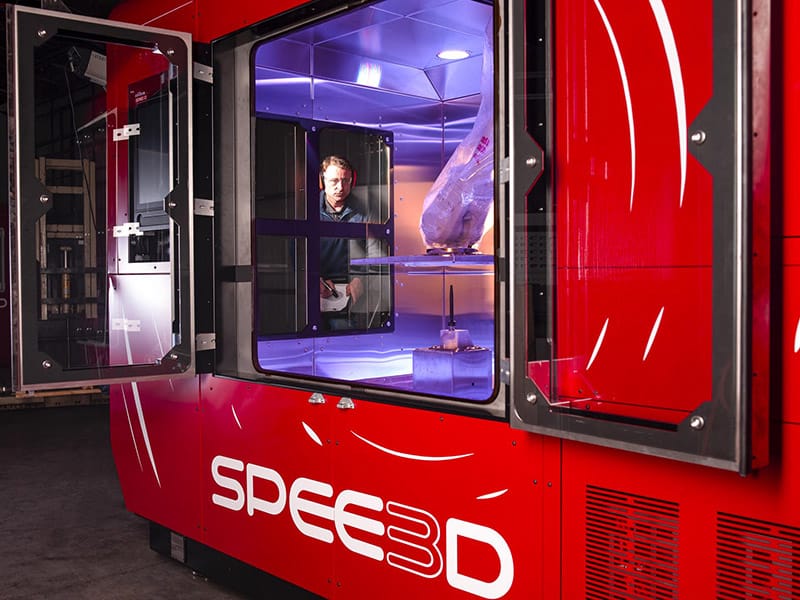Stainless steel components can be printed on site, using a technology developed by a Melbourne company
Stainless steel components can now be 3D printed on site, thanks to a Melbourne-based business that has made the concept a reality – potentially enabling companies to source essential spare parts instantly.
SPEE3D, which was established in 2015, has evolved its product to the point 316L stainless steel can be 3D printed on site.
The company says its use of kinetic energy rather than lasers and gasses means printing can occur between 100 and 1,000 times faster than other 3D metal printing, while the cost is “competitive” with traditional manufacturing.
SPEE3D also completed a 12-month trial of its technology with the Australian Army earlier this year, resulting in over 50 case studies of printable parts.
As a result, the program has been extended into 2021 to verify the initial results – with the printer performing in hot and dusty conditions over 600km from base.
Support from the federal government-funded National Energy Resources Australia (NERA) has enabled SPEE3D to offer printing of stainless steel parts and components from printers it describes as “the world’s most affordable additive manufacturing process”.
“We’re confident being able to print stainless steel on demand will attract many industries to SPEE3D’s technology, particularly within the oil and gas sector, and undoubtedly bring new collaboration, sales and export opportunities,” says SPEE3D co-founder Steve Camilleri.
“Manufacturing stainless steel parts using SPEE3D technology will completely redefine additive manufacturing’s place within the sector.
“For the first time the supply chain will be able to source parts on demand, and substantially reduce cost.”
The ‘on demand’ nature of sourcing parts means stainless steel that needs replacing at remote locations can now be done without long and costly delays.
NERA CEO Miranda Taylor believes the concept will open up opportunities for both the company and many industrial sectors.
“SPEE3D’s movement into producing stainless steel as a 3D printed part is really critical because – as is the case with oil and gas – there are a number of sectors in which steel is the medium of choice,” she says.
“The ability to produce those products at point of need using stainless steel will open up a whole new world for SPEE3D.
“We really need to be leading and participating in the race for technology and advanced manufacturing and companies like SPEE3D are absolutely critical to this.”
SPEE3D adds the 3D printing process also reduces excess material waste and consumables required


